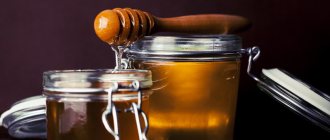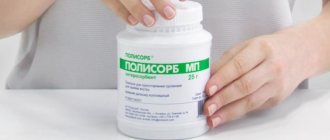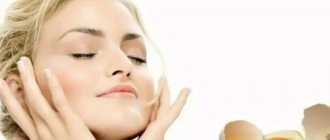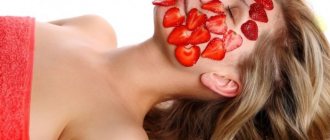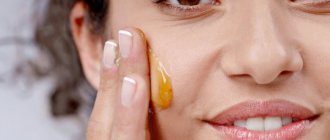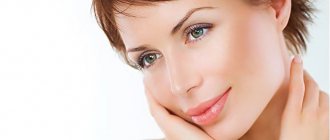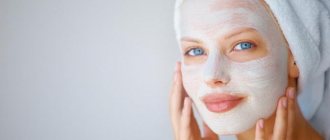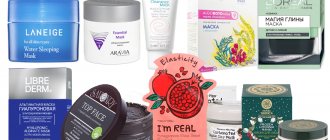Humanity has been using the healing properties of honey for over eight thousand years. Scientists have found images of honey procedures on ancient Egyptian and ancient frescoes. Centuries have passed, but honey is still included in modern cosmetic products. Research has proven its benefits for the skin of the face and body. Homemade face masks with honey have a moisturizing, cleansing, antibacterial and antioxidant effect.
What are the benefits of honey for facial skin?
Natural honey contains more than 200 different substances, including amino acids, vitamins, minerals and enzymes, but primarily sugar and water. The main components of honey sugar are from 35 to 40% fructose, up to 30% glucose and at least 5% fructo-oligosaccharides. Scientists explain the amazing antibacterial activity of honey, proven in a number of clinical studies, by the high concentration of glucose. Fructooligosaccharides are probiotic agents that help the body improve skin barrier function.
Honey contains potassium and calcium, magnesium and selenium, sodium, phosphorus, iron, copper, manganese, zinc, vitamin C and B vitamins. Each of these elements contributes to the benefits of honey procedures. Thus, ascorbic acid promotes the production of collagen, fights free radicals, saves from inflammation, and supports the immune system of the skin. Thanks to it, the skin becomes elastic, moisturized, the complexion improves, and fine wrinkles disappear. Zinc prevents excessive sebum secretion, has an astringent effect, softens and whitens, affects the rate of healing of wounds and ulcers, and relieves irritation. Pantothenic acid and pyrodoxine (vitamins B3 and B6) are recognized by scientists as an effective remedy against dermatitis, remove excess fluid, relieve swelling and puffiness. Riboflavin and cinocobalamin (vitamins B2 and B12) stimulate cell division, help skin renew itself, restore youth and elasticity.
Honey care: which honey to choose for masks?
Not all honey is suitable for making masks. And we're not just talking about the obvious fact that you want a natural product, without additives or fillers. Honey must be raw, only under this condition will it be useful. Filtration and pasteurization deprive honey of a number of natural nutrients and reduce the healing effect of the product.
The final properties of the prepared mask depend on the pollen from which the bees produced honey. Honeydew honey is the poorest in minerals, because striped honeydewers collect it during periods when honey plants are not available. This “production” uses honeydew (various secretions of insects living on plants) and honeydew. Polyfloral honey is collected from many honey plants, so its composition is unpredictable, but it still contains many biologically active substances. Monofloral honey is the best choice for making homemade honey masks. Knowing from which plant the pollen was collected, we can say what additional medicinal properties the product has. As a general rule, the darker the natural honey, the more antioxidants it contains.
Prohibitions and recommendations for use
Is it possible to put honey on your face? The answer to this question will depend on the individual characteristics of a particular person. Thus, it is not recommended to use honey on the face if you have the following conditions:
- Individual intolerance to bee products.
- Presence of open wounds.
- Acute course of skin diseases.
- The presence of inflamed purulent acne.
The use of natural honey is relevant in the following situations:
- Provide comprehensive care for normal skin types.
- Prevention of acne in combination dermis.
- Restoring water balance, nourishing dry skin.
- For oily dermis prone to episodes of acne.
- Problematic skin type with blackheads and acne spots.
Honey face mask for acne
A honey mask with cinnamon, nutmeg and lemon juice not only fights breakouts, but also helps lighten the skin, fade scars, relieve redness and swelling. To prepare you will need:
- 1/2 teaspoon ground cinnamon;
- 1 teaspoon nutmeg;
- 1/2 teaspoon freshly squeezed lemon juice;
- 1 teaspoon honey.
Mix all ingredients in a small bowl. If the honey is too thick, warm it slightly in a water bath. Apply the finished mask with your fingertips to cleansed facial skin using patting movements and leave for 10-15 minutes. Honey masks are very sticky, so you need to wash them off with warm water. To tighten the pores, wipe your face with an ice cube at the end of the procedure.
Honey mask for dry skin
A mask made of honey, avocado and coconut oil is suitable for those with dehydrated, flaky skin. The nourishing ingredients included in this mixture can provide the skin with additional moisture and lock it into the cells. Take:
- 1 teaspoon honey;
- 1 teaspoon coconut oil;
- 1/2 ripe avocado.
Mash the quartered avocado with a fork into a smooth puree, add the remaining ingredients and stir. If the coke oil is too hard, melt it in a water bath. Wash your face with warm water to clean and open the pores, remove excess moisture with a terry towel. Apply the resulting mass with light patting movements, avoiding the area around the eyes. Keep the mask on for about 15 minutes and then rinse off with warm water. Pat your skin dry with a terry towel and apply moisturizer.
The effect of using honey
What happens if you smear honey on your face? A course of cosmetic procedures using a natural component will achieve the following results:
- Elimination of small skin creases.
- Rejuvenation of the dermis.
- Intense moisturizing, toning.
- Treatment of problem skin.
- Restoration of skin structure.
- Normalization of the activity of the sebaceous glands.
- Activation of elastin and collagen production.
Honey can accelerate regenerative processes, stimulate blood circulation and normalize metabolic processes in cells.
Intensive mask with honey for acne
The intensive anti-acne honey mask contains honey, oatmeal and ground orange zest. Oats gently exfoliate dead cells, nourish the skin, and promote its elasticity. Orange zest contains vitamin C, its small particles serve as a soft scrub, and ground citrus peels give the mask a pleasant aroma. You will need:
- 1 teaspoon honey;
- 1 teaspoon ground oatmeal;
- 1 teaspoon chopped orange zest.
Mix all ingredients in a small bowl and apply to cleansed facial skin. Leave the mask on for 15 minutes. When the time is up, rinse off the composition with warm water and rinse your face with cool water.
Refreshing face mask with protein and honey
A mask made of honey, protein and herbs is suitable for all skin types. As a result of its influence, the skin will cleanse, minor inflammations and redness will disappear, small wrinkles will smooth out, and turgor will improve. The mask consists of:
- 1 egg white;
- 1 teaspoon of natural honey;
- 1 teaspoon fresh mint leaves;
- 1 teaspoon of crushed dried chamomile flowers;
- 3 drops lavender essential oil.
Warm the honey in a water bath to body temperature. Beat the egg white until thick foam forms. Finely chop the mint leaves. Mix honey, mint, crushed chamomile and lavender essential oil into a smooth mixture. Apply a thick layer of the mask to a cleansed face using a wide brush or cosmetic spatula. Take a horizontal position and leave the mask on for 15-20 minutes. Rinse off with warm water and then wipe your skin with an ice cube. Ideally, the ice will be made from frozen chamomile infusion.
Cleansing your face with honey: universal methods
Bee honey can be safely called a universal cosmetic product. It not only softens the skin and gives it elasticity. Honey can be used to effectively cleanse clogged pores. Moreover, there are several options for this useful procedure:
- Applying honey in its pure form. If necessary, melt the honey in a water bath. (But do not forget that an overheated product loses its beneficial properties; do not heat it above 40 degrees). When the honey has cooled, apply it to your face and wait 10 minutes. The frequency of honey sessions is twice a week.
- Honey-apple cleansing. To prepare a cleansing composition, mix a spoonful of grated apple with a spoonful of oatmeal. Add a pinch of fresh chopped mint and a spoonful of honey. Apply the mixture to your face, massage lightly and leave for a few minutes. The frequency of procedures is once a week. This home remedy not only cleanses the skin, but also helps saturate it with useful substances and has a tonic effect.
- Honey with protein. This simple mixture cleanses and nourishes the skin at the same time. Spread it evenly over the skin, wait until it dries and then carefully remove it.
- Almond-honey scrub. This composition simultaneously provides both chemical and mechanical cleaning of the skin. It is prepared from a spoon of honey and a quarter spoon of ground almonds. The ingredients are thoroughly mixed and applied to the skin with gentle movements. When massaging your face, do not use excessive force, otherwise the delicate skin may be injured.
- Soft sugar scrub. A spoonful of sugar is combined with a teaspoon of bee product and diluted with milk. The result should be a soft paste. It is applied to the face, lightly massaged into the skin and waited for half an hour. Then the composition can be washed off.
- Scrub made from honey and salt. For this composition you need to take fine sea salt. It is combined with honey (the ratio is determined by eye) and the face is treated.
Traditional mechanical procedures work much faster, but can damage the skin. And scrubs with honey act very gently, without injuring even the sensitive dermis. True, you will have to wait a long time for noticeable results - several months. Therefore, be patient and do not forget to carry out the procedures regularly, strictly following all the rules of home care.
A few more popular recipes
- Effective peeling for oily skin
A pleasant mixture of aromatic honey and spicy cinnamon will help reduce sebum levels and cleanse pores of deep dirt. The components are combined in the following quantities: 3 tablespoons of honey and a teaspoon of seasoning. The resulting composition is applied before bed and left overnight, washed in the morning. If you don't want to stain your pillowcase, cover your pillow with a soft towel. The procedure can be repeated every evening until a noticeable improvement occurs.
- Honey with aspirin
This recipe is recommended in the following cases:
- acne;
- rashes;
- increased activity of the sebaceous glands;
- impaired pigmentation.
Prepare an exfoliator in this way. Powdered aspirin (3 tablets) is mixed with a spoon of bee honey. If necessary, the composition can be diluted with water. Aspirin normalizes the functioning of the skin glands and dissolves the contents of the pores. And honey at this time prevents the skin from drying out. The result is a steady improvement. The face is cleansed, becomes smooth, fresh and elastic.
Aspirin with honey can also be used for a more complex recipe:
- Aspirin (2 tablets) is ground into powder.
- Use a pipette to add a couple of drops of hydrogen peroxide to the aspirin.
- Wait 2 minutes.
- Add tea tree oil (a drop) and lemon juice (2 drops).
- Add 2 drops each of apple cider vinegar and jojoba oil.
- Add a teaspoon of honey and mix the ingredients thoroughly.
- If the composition is too thick, add a little more jojoba oil.
Spread the finished mixture over clean skin and leave for about 40 minutes. Then wash with cold water to tighten the pores. This peeling can be done once a week.
Important! This method has certain contraindications. Aspirin-honey procedures are not recommended for the following problems: dry skin; increased sensitivity; rosacea; nearby vessels.
- Composition with turmeric
This product is intended primarily for problem skin, as it quickly helps get rid of acne. To cleanse your skin and make it smooth, follow these steps:
- Combine a teaspoon of honey with a teaspoon of milk.
- Add a teaspoon each of turmeric and fresh lemon juice.
- Treat your face and wait half an hour.
The composition has a complex effect. Honey and milk moisturize and nourish tissues. As a result, the skin becomes more elastic and fine wrinkles disappear. And citrus juice and seasoning eliminate rashes and age spots.
- Honey and lemon for quick results
According to many cosmetologists, it is useful to enrich honey for peeling with lemon juice. The fact is that this citrus contains AHA acids, which are extremely important for the skin, which quickly remove dead skin cells.
There are several options for honey-lemon peeling:
- Cut a piece of lemon, drip a little honey on it and wipe your face without touching the skin around the eyes. After a few minutes, wash with water.
- Mix sea salt, lemon juice and honey in equal quantities. Apply to the face, massage and wash off after five minutes.
- Add a little lemon juice and 3 ground strawberries to a teaspoon of honey. Apply to the face with massage movements. The duration of the procedure is about three minutes.
Important! Remember that lemon and salt can be irritating to the skin. Therefore, do not use these components on wounds, inflammations or overly sensitive skin.
- Anti-acne mask with honey
Even dermatologists confirm the benefits of natural honey for the skin. According to them, the bee product can be used to effectively combat acne. First of all, it is recommended for those with dry skin, since pharmaceutical acne preparations have drying properties.
We bring to your attention two interesting options for masks:
- Manuka bush honey mask. This type of honey comes from New Zealand. Its main advantage is its pronounced antifungal and anti-inflammatory effect. Apply honey to your face, and after 10 minutes, wash with cold water. Please note that you need to rinse off the honey thoroughly - the skin should not remain sticky. Otherwise, the pores may become clogged.
- Honey with aloe. Mix the bee product with plant juice in a 2:1 ratio. Apply to skin and wait about 10 minutes. Aloe quickly relieves inflammation and irritation. This mask is great for sensitive skin.
Honey masks must be applied to the face regularly, twice a week. However, you should not expect results after the first sessions. To achieve noticeable improvement, you need to take a long course - at least 2 months.
Nourishing facial mask with honey, yogurt and egg yolk
If egg white is used in cosmetology as a drying, tightening, cleansing agent, then egg yolk is valued as a source of nutrients. Egg yolks contain fifteen minerals and eleven vitamins. Among them are rare and so necessary for the skin melatonin and lecithin. Melatonin helps cell renewal, while lecithin ensures the penetration of nutrients into the deep layers of the epidermis. A mask with honey and egg yolk is a real “humanitarian aid” for exhausted skin. Yogurt, also included in this mask, is rich in lactic acids, which have a gentle exfoliating effect, and probiotics. Take:
- 2 tablespoons of natural honey;
- 1 egg yolk;
- 1 tablespoon of thick plain yogurt.
Gently grind the honey into the yolk, add the yogurt and stir until a smooth, homogeneous paste forms. Apply the mask generously to the face and neck using a spatula, avoiding the eye area. Lie down and keep the honey and egg face mask for at least 10 minutes and then rinse with warm water. Complete the procedure by wiping your face with an ice cube.
Contraindications and precautions
High-quality natural products, unfortunately, also have their contraindications. And bee honey is no exception. First of all, we are talking about individual intolerance. Also, procedures with honey are not recommended for dermatological diseases and skin injuries.
Even if you consider yourself a person not prone to allergies, do not be lazy to conduct a small test. Apply honey to a small area of skin on your wrist or elbow. And then carefully monitor the reaction. If no irritation appears on the skin within a quarter of an hour, then the honey has suited you and you can proceed to facial procedures. Such precaution will not be superfluous at all, because... you can never be sure that a product purchased from the market is environmentally friendly.
Particular care should be taken when using honey not in its pure form, but as part of homemade cosmetic mixtures. When a bee product interacts with other components, the risk of allergic reactions on the skin increases.
Important! Cosmetic compositions made from natural products do not contain preservatives and for this reason cannot be stored for long periods of time. Do not stock up on such compounds for a long time - a couple of days at most. It’s even better to prepare a new portion of the product before each application. If you have prepared too much scrub or mask mixture, you will have to throw away the rest. Remember that the desire to save a little in this case can greatly harm the skin.


